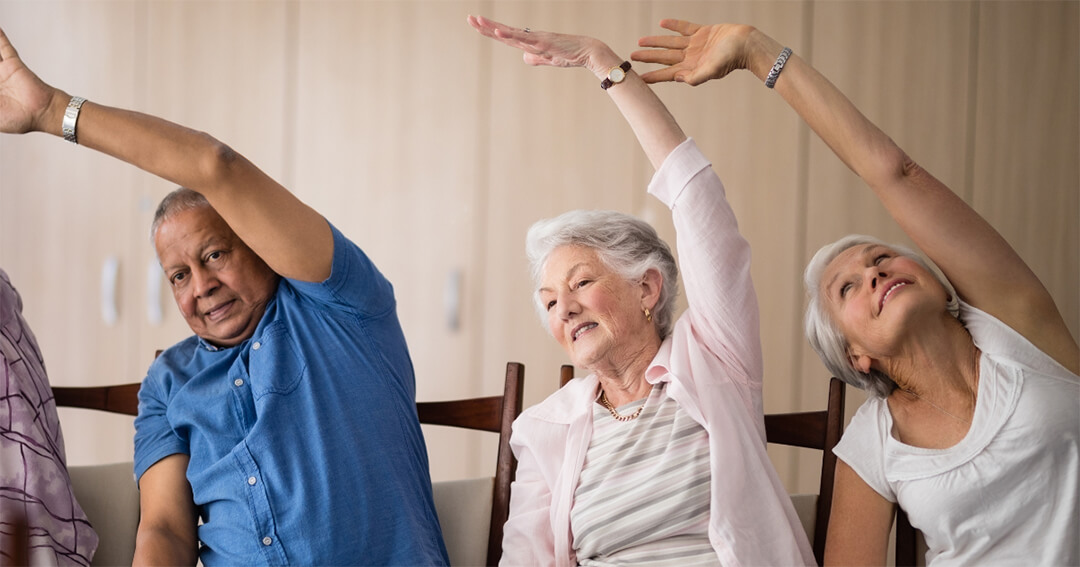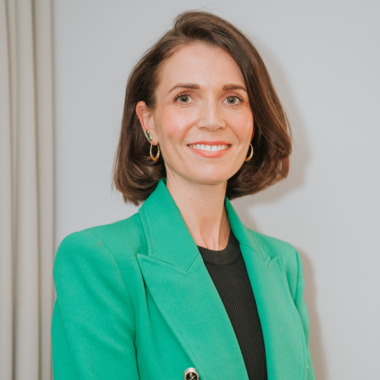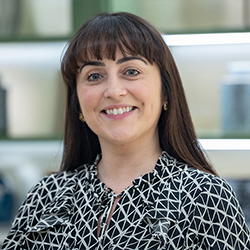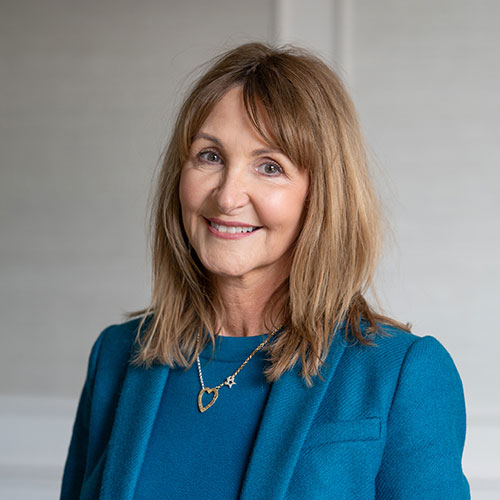At Loveday, we believe that truly exceptional care means nurturing not only the body, but also the mind and spirit. That’s why we’ve embraced the transformative power of yoga and mindfulness, practices that offer proven benefits for those living with dementia. From reducing anxiety and agitation to improving mobility and enhancing mood, yoga is much more than just gentle movement; it is a pathway to presence, connection and emotional wellbeing.
Since 2022, our Members have been fortunate to experience the unique approach of Charlotte Kahn, a yoga therapist who specialises in working with individuals living with dementia. Through her deeply compassionate, person-centred sessions, which are enriched with music, sensory engagement and imaginative movement, Charlotte has created something truly special. Her weekly classes are now a cherished part of life at Loveday, offering a consistent source of calm and community.
Charlotte shares her inspiring journey, the science behind yoga for neurodegenerative conditions, and how a few simple movements, paired with the right music and a warm smile , can bring lasting benefit to those at every stage of dementia.
Can you tell us a bit about your background and what led you to specialise in yoga for people living with dementia?
My journey into leading yoga for people living with dementia began on a very personal note. Around the same time that I became a yoga teacher my father was diagnosed with Parkinson’s and my grandfather with Alzheimer’s. Wanting to support my loved ones – and other’s facing similar challenges – I went on to train as a yoga therapist, learning how to adapt yoga for individuals with a range of health conditions, focusing on neurodegenerative diseases.
I started by volunteering for Age UK, leading accessible chair yoga sessions at a local care home. Then hired by Camden Council to run chair yoga for dementia at various community centres across the borough. Since early 2022, I’ve been teaching weekly sessions at Loveday, along with classes at several other care homes.
I’m particularly passionate about creating meaningful experiences for people in the later stages of dementia. I have developed a unique offering of sensory yoga classes that are both engaging and therapeutic with the aim of creating connection, calm, and joy for participants.
What are the unique benefits of yoga for individuals living with dementia, both physically and emotionally?
Yoga offers a wide range of physical and emotional benefits for individuals living with dementia. Physically, it helps maintain mobility, flexibility and core strength through gentle stretching, joint mobilisation and strengthening exercises. Strengthening the lower body is essential for supporting balance and reducing the risk of falls.
Yoga can also support cognitive function through neuroplasticity-based exercises, such as coordinating movement with the breath, which stimulates the brain.
Emotionally, yoga can help alleviate symptoms commonly associated with dementia, such as anxiety, low mood and agitation. Many participants experience a lifted mood and a greater sense of calm after sessions. Practices that combine mindfulness and breath awareness help individuals stay present, which can be grounding and reassuring.
Deep breathing has a powerful calming effect, helping to regulate the nervous system by activating the parasympathetic response. This slows the heart rate, reduces stress, and encourages the release of feel-good hormones, all of which can ease frustration and promote emotional wellbeing.
How do you adapt your classes to meet the varying needs and abilities of participants?
To effectively support participants, it’s important for me to know the type and stage of dementia they’re living with, as well as any other health conditions or injuries they may have. Everyone is different, and my person-centred approach allows me to tailor each session to the individual’s needs.
In the early stages of dementia, yoga sessions focus on strength-building exercises to improve physical confidence, relieve tension and help participants stay active and independent. If possible, we will include some standing postures using the chair for support. I also incorporate maintaining cognitive function through coordinated movements that stimulate the brain.
In the mid stages, the emphasis shifts to movements that help release energy and manage emotional challenges such as frustration or agitation. Gentle stretching and rhythmic sequences support suppleness and emotional regulation.
In the later stages, sessions prioritise relaxation, sensory engagement, and maintaining whatever mobility is possible. I use techniques that foster connection with the aim of creating a sense of calm and comfort.
Can you describe a typical session? What can someone expect when attending your class?
My yoga classes are chair-based and designed to be inclusive, accessible and engaging for people at all stages of dementia. A typical session begins with a warm, cheerful welcome to create a supportive environment. I greet each participant by name, which helps with orientation, builds connection and sets a positive, personal tone.
We start with a simple breathing practice to ease any uncertainty and help everyone arrive in the space. Gentle warm-up movements follow to release muscle tension. I stand in front of participants to clearly demonstrate each exercise, encouraging them to mirror me. I also use imaginative cues, for example, instead of saying “move your fingers,” I might say “pretend you’re playing the piano”, to make the movements more relatable and engaging.
During the session, we explore accessible stretches like “cat-cow”, seated twists to aid digestion, and leg-strengthening movements such as “kicking a ball.” Coordination exercises might involve simplified “sun salutations” – lifting and lowering the arms with the breath.
Music is an important part of the class. It lifts the mood and supports rhythm and movement. I also often give instructions to a beat — for example, while tapping my toes and clicking my fingers, I might say, “Tap, tap, tap your toes,” inviting participants to join the rhythm. This playful structure helps sustain engagement.
Props such as resistance bands, weighted bean bags and Pilates balls keep the class stimulating and fun. Passing or bouncing the ball is a great way to support hand-eye coordination and social interaction, especially for those in later stages of dementia.
We end the session with calming breathwork or simple vocal exercises like chanting “Om” or “humming bee breath”. Sometimes, we include self-soothing gestures, such as wrapping the arms around the body for a big hug and a pat on the back, a moment of celebration for completing the class.
How do you use music to create a calming or familiar environment?
Music plays an integral role in shaping the emotional tone of my sessions, whether it’s to create a calming atmosphere or to energise the group. I often synchronise movement with well-known songs, for example, we might march along to Fats Domino’s “When the Saints Go Marching In”, twist to Chubby Checker’s “Let’s Twist Again”, or wave our arms while singing along to “Que Sera, Sera.” This kind of music-and-movement pairing creates rhythm, structure, and joy, and helps participants engage both physically and emotionally.
Familiar songs repeated weekly also create a sense of routine and recognition, which is particularly helpful for people living with dementia. The music becomes a cue for the body and mind, building confidence and comfort over time.
Whenever possible, I incorporate music based on individual preferences. For example, one Member at Loveday grew up in Liverpool and is a lifelong Beatles fan — so I make sure to include a Beatles song in the session, often “She Loves You,” which always brings a smile and a spark of recognition.
I usually close each class with calming breathwork to slower, soothing music. One favourite is Frank Sinatra’s “Moon River” — its familiar melody and gentle pace help ground participants and leave them feeling relaxed and at peace. Top of FormBottom of Form
Have you witnessed any particularly powerful or memorable moments in your classes? Success stories?
For me, the most meaningful moments often come when someone arrives at the session feeling agitated or low in mood — and by the end, they’re visibly brighter, maybe even laughing and having fun. Seeing that shift, even in a small way, feels like a huge success. It reminds me of the power of yoga to lift the spirit.
One moment that stands out was with a participant in the later stages of dementia who had very limited mobility. During a session using a Pilates ball, they became fully engaged — reaching out, catching and throwing the ball with real enthusiasm. Even though their range of movement was limited, their reflexes and response were still very much there. There was a real sense of joy and accomplishment in that moment — not just for the Member, but for everyone in the room.
What role does routine and repetition play in your sessions, and why is this important for people living with dementia?
Routine and repetition are essential components of my classes. For people living with dementia, memory loss and changes in cognitive processing can make it difficult to follow new or complex instructions. Establishing a consistent structure helps reduce confusion and create a sense of familiarity.
Each class follows a similar format; from the welcome and breathing practice to the types of movements and the music used, so participants begin to recognise the exercises. This predictability helps build confidence and encourages engagement.
Repetition within the session also plays a key role. I repeat instructions slowly and clearly, often demonstrating movements multiple times. Using the same verbal cues and familiar exercises week after week allows participants to retain a sense of participation and achievement, even as cognitive changes progress.
How do you support carers or loved ones who may participate alongside Members?
Loved ones and carers are always welcome to join my yoga classes – in fact, I encourage them to join and participate fully. I’ll often guide loved ones on how to assist in a gentle way, whether that’s helping with a movement, singing along, holding the props, or simply offering a reassuring presence.
Carers and loved ones can also benefit from yoga and can be a valuable tool for their own wellbeing, even just a few deep breaths can offer a moment of calm.
What advice would you give to care teams or families interested in introducing yoga for someone living with dementia?
Start small and keep it simple. Gentle movements, even just stretching the arms or tapping the toes, can make a big difference. It’s not about doing the poses “right” — it’s about the experience of moving, breathing and connecting.
Repetition, routine and familiar music help build comfort and engagement. Personalising the music to the individual’s taste is even better. Clear, calm instructions and visual cues — demonstrating movements is often more effective than verbal directions alone. Add props such resistance bands, bean bags, and balls to help with engagement.
Importantly, focus on the emotional tone: keep it warm, encouraging and light-hearted. Smiling, using humour and celebrating small moments of participation go a long way. The goal is creating joy in the moment.
What do you find most rewarding about this work, and what keeps you inspired?
What I find most rewarding is the connection- those small but powerful moments where someone participates, laughs or smiles. Seeing someone’s mood lift or simply witnessing a moment of calm in someone who was previously unsettled, those are the things that stay with me.
Teaching yoga to people living with dementia is a reminder that connection doesn’t always require words or memory or even movement, it can be found in simply being present. What keeps me inspired is knowing that even in the later stages of dementia, there is still so much potential for joy. Being part of that and creating space for people like my father and grandfather is a privilege and the most rewarding work I do.



